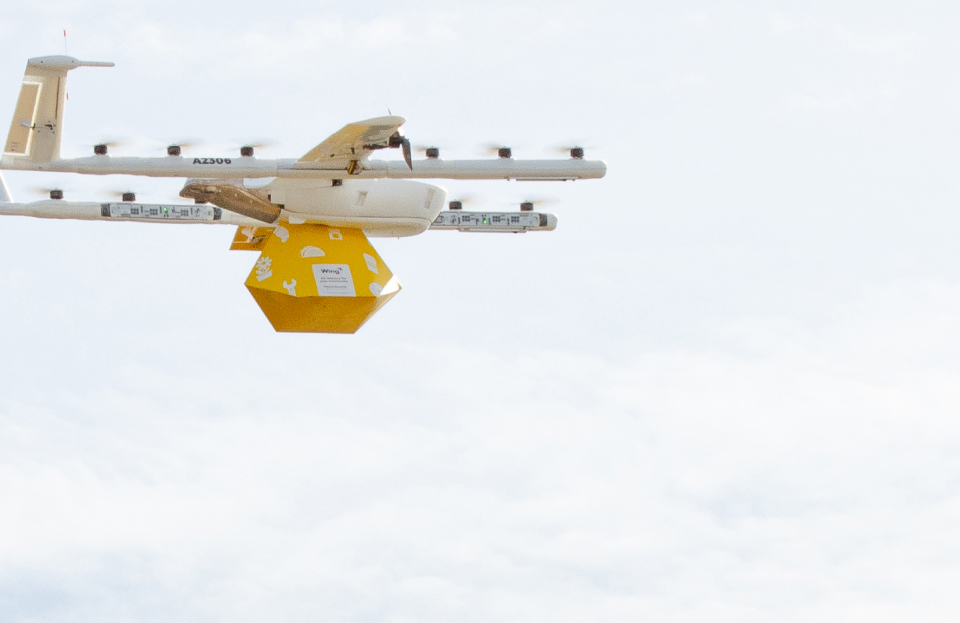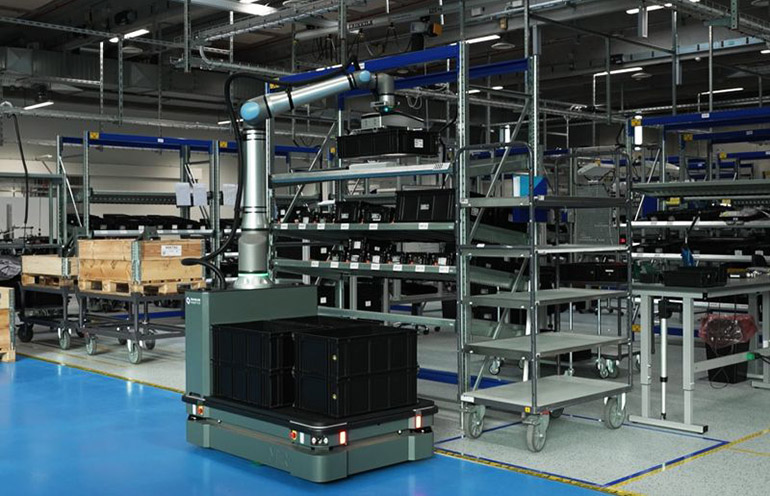Wing said updated FAA exemptions for its detect-and-avoid approach open the door for it to safely scale in the U.S. | Source: Wing Aviation
The Federal Aviation Administration has authorized multiple operators to fly commercial drones without visual observers in the same airspace. Leading the charge with the FAA are Zipline International and Wing Aviation LLC, the commercial drone-delivery segment of Alphabet Inc.
When you fly in a commercial airplane, your pilot talks with an air traffic controller to make sure it’s safe to take off, that the flight won’t overlap with another plane’s route, and that when you arrive, it’s safe to land. Air traffic controllers work with all pilots, no matter which airline they work for, and they strictly follow operating procedures to handle flights in a safe, fair, and transparent way.
Drones, on the other hand, aren’t managed by air traffic controllers. Instead, professional drone operators work with one another to fly safely.
Right now, Zipline said that is sometimes as manual as operators calling or texting about upcoming flights that are nearby. While this has worked so far, as drone delivery expands, the FAA needed a better way.
FAA provides for BVLOS operations
The FAA’s recent authorizations for Zipline and Wing allow the companies to deliver packages while keeping their uncrewed aircraft systems (UAS) safely separated. Under this authorization, industry players will manage the airspace with rigorous FAA safety oversight.
Typically, when operating drones, the pilot drone must always be able to see the aircraft. New advancements in air traffic technology and procedures, however, are providing a key step forward in making these beyond visual line-of-sight (BVLOS) flights routine.
Using UAS traffic management (UTM) services, companies can share data and planned flight routes with other authorized airspace users.
What are UTM services?
UTM starts with the idea that drone operators can work together to share where they intend to fly so that drones won’t fly too close to one another.
Without UTM, this could take a long time, as teams frequently handle route validation, safety checks, and all of the documentation that is required for every flight. With UTM, those steps can be done in seconds, Zipline says.
Zipline said it has put years of work into improving and strengthening the processes needed to make commercial drone deliveries easy to increase in volume while maintaining safety and regulatory compliance. As drone operations scale, automating these processes becomes an essential investment, the company claimed.
The FAA said that all flights must occur below 400 feet altitude and away from any crewed aircraft. The agency said it expects initial flights using UTM services will begin in August, and it will issue more authorizations in the Dallas area soon.
The recent approval came as the FAA works to release the Normalizing UAS BVLOS Notice of Proposed Rulemaking (NPRM), which would enable drone operators to expand operations while maintaining the same level of safety as traditional aviation. The agency said it is on track to release NPRM this year, following strong Congressional support in the recent FAA reauthorization.

 3 months ago
37
3 months ago
37









 English (US) ·
English (US) ·